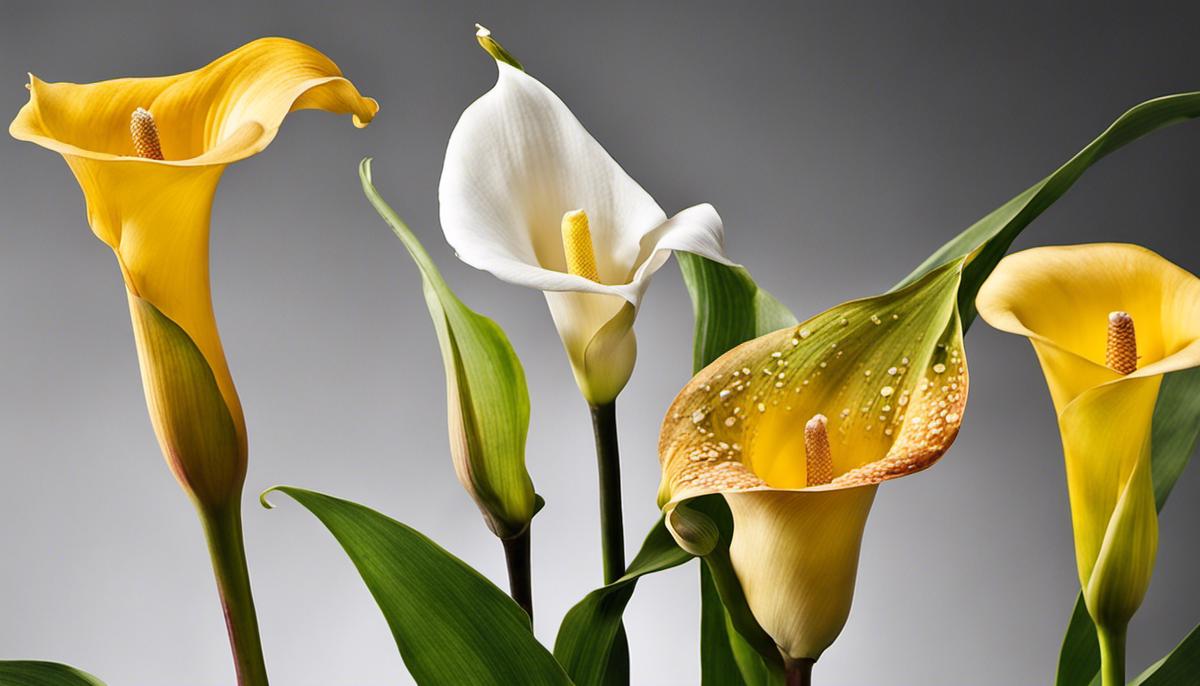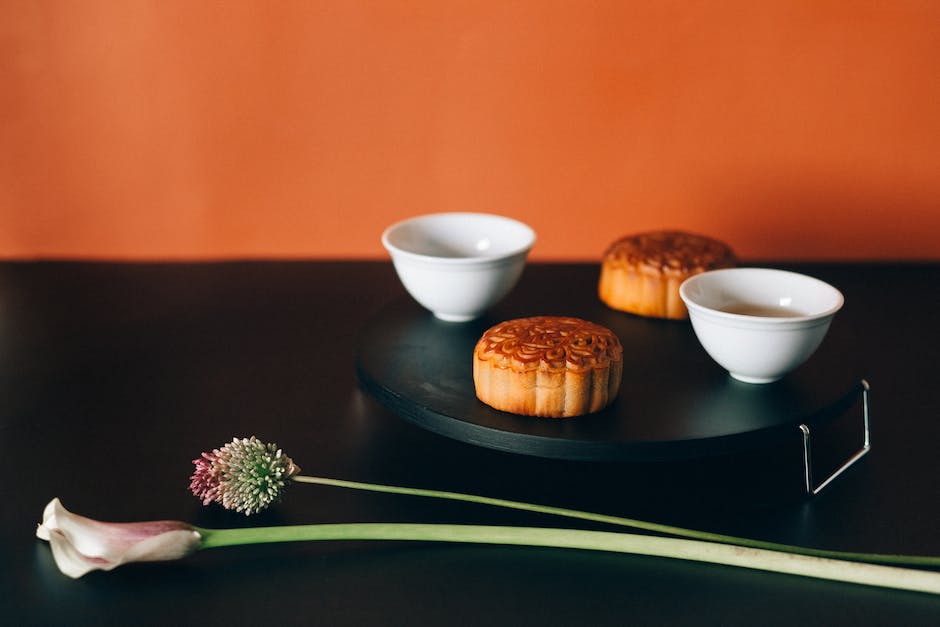Keeping Potted Calla Lilies Vibrant Longer

Calla lilies, renowned for their elegant beauty, are a popular choice for many plant enthusiasts. While these plants are frequently seen at special occasions and in professional floral arrangements, their simple maintenance requirements make them a practical and pleasurable choice for home interiors as well. Among the characteristics that make them appealing is their longevity, especially when potted and cared for properly. This article sheds light on the lifespan of potted calla lilies, along with the external factors that can influence this. Furthermore, we delve into essential care tips to ensure your lilies thrive over time and discuss common plant diseases and pests, equipping you with the knowledge to prevent and combat these potential threats.
Understanding Calla Lilies’ Lifespan
Unfolding the Lifespan of Potted Calla Lilies: A Journey in Time
There’s that indescribable allure with potted calla lilies that can steal any heart in a twinkling. From the delicate curves of its intriguing spathes to the vivacious hues it dances in, each detail adds to form a breathtaking spectacle. But have you ever wondered, what is the average lifespan of these elegant charmers when cherished in pots?
Most calla lily aficionados will attest that these captivating flora are perennials by nature. That means, with the right approach and a sprinkle of gardening ardor, these beauties can grace your dwelling for several rewarding years. The average lifespan for a well-maintained potted calla lily stretches from 3 to 8 magnificent years!
The secret sauce is to surrender to the calla lily’s rhythm of life; understanding its individual demands and nourishing those needs to the brim. There is no one-size-fits-all when it comes to caring for calla lilies as each plant has its own unique story to tell. However, from the countless narratives that have been paid heed to, some common rhythms have been charted.
Calla lilies are native to Southern Africa and naturally adapt to a warm and moist climate. Therefore, providing such conditions will considerably elongate their lifespan. When the active growth phase starts, usually in the spring or early summer, provide ample sunshine and regular watering. Overwatering, on the other hand, could lead to root rot which is a common saboteur of a calla lily’s longevity.
These exotic blooms also fancy a well-draining pot filled with loose, rich soil. Additionally, they can greatly benefit from periodically feeding with a high-quality, balanced fertilizer during the growing months. Remember, an anemic feeding schedule can shorten their lifespan drastically.
A carefully inserted dormancy period can work wonders in extending their life as well. Once the blooms fade around the end of summer, gradually cut back on water. When the leaves turn yellow and wither, stop watering altogether for a period of about two months. After this rest, return to the regular watering schedule and treat yourself to the calla lily’s mesmerizing show once again!
In conclusion, keep in mind that every lush lily has its own tale. By understanding and nurturing these tales, you’re engaging in a beautiful love song that can serenade you for years to come. So, ride the waves of this soothing melody and let the enchanting verses of the potted calla lily fill your dwelling and your heart!

Essential Care for Calla Lilies
Springing forth from the pot in a lush display of elegance, the calla lilies bask in the tender love and care provided by their enthusiast. Zealous care takers embody an understanding of the plant’s South African roots, adapting their domestic environment to meet calla lilies’ innate expectations. Let’s plunge into the specifics of nurturing these stunning flora, a pursuit in which attention to detail is paramount.
While enjoying an ample dose of sunshine for optimum growth is critical, potted calla lilies are not fans of extreme temperatures. Therefore, it’s essential to dodge exposing them to scorching heat or freezing cold. Indoor plants want a home that stays between 55-75 degrees Fahrenheit, a range within which they thrive. A smart way to cater to this need? Keep your potted beauties away from heat vents and chilly window drafts.
As for hydration, calla lilies don’t appreciate waterlogged roots. Incorporate a watering schedule that allows the soil to dry out between waterings. While it sounds contradictory, this intermittent dry spell simulates their natural habitat where they adapt to seasonal rain and dry periods. Overlook this, and you risk giving your lilies root rot, a surefire ticket to a frail existence.
It’s not just optimized watering that these graceful beings require, but also well-draining soil. A mix of potting soil with sand can create a suitable potting medium. This blend caters to calla lilies’ penchant for loose and well-drained soil structure, effectively preventing the aforementioned risk of waterlogging.
Preventing pests is another crucial concern in calla lily care. Parasites like aphids and spider mites may host an unwanted feast on your beloved plants’ foliage. Introducing natural predators like ladybugs or lacewings can nip this pest problem in the bud. Or, for indoor plants, a simple insecticidal soap will usually do the trick.
To thrive, our potted friends crave a nutritious diet just like us, but they pose one additional requirement: a break from the feed during their dormant period. Growers need to withdraw from feeding the lilies once they stop blooming. This shift signals their entry into a resting phase, and a reduction in resources – water and nutrients – supports this natural cycle.
Importantly, during dormancy, calla lilies should be placed in a cool, dark place (ideal temperature around 55 degrees Fahrenheit) for about two to three months before being revived with warmth and moisture for the growing season. But remember, as each plant deciphers its lifecycle cues differently, don’t initiate this process unless the foliage has yellowed and begun to wither.
Caring for potted calla lilies is akin to nurturing a symphony, requiring a fine balance between nature’s rhythm and human touch. In learning their language and heeding their silent signals, we build an enriching, mutually beneficial bond with these exquisite, living forms of art.

Recognizing and Combating Plant Diseases
Here comes the pertinent part, understanding common diseases and pests affecting the precious calla lilies, and how to circumvent them.
Without a doubt, calla lilies are susceptible to several diseases and pests. Let’s delve in!
- Root and Tuber Rot: This menacing threat usually arises due to overwatering or poor-drainage, creating a damp, oxygen-less environment that fuels the fungal growth often responsible for the rot. Besides maintaining proper watering and drainage, using a fungicide can also prove beneficial in treating affected plants.
- Yellowing Leaves: Another noticeable disease affecting calla lilies. It often results from too much light or over-fertilization. Most of the time, simply adjusting the plant’s light exposure or reducing fertilization can ease the issue progressively.
- Soft Brown Spots: Is your calla lily developing brown spots with a watery halo? If yes, then bacterial soft rot is the culprit. Characterized by a rank odor and disastrous effects, this issue should be addressed early. Using copper-based bactericides and trimming infected parts promptly can halt the disease from spreading.
Now switching gears and venturing towards pests; two of the most common invaders are Aphids and Spider Mites.
- Aphids: These pesky bugs come in an array of colors from white and green to black. If left unchecked, an aphid infestation can severely affect plant health. For immediate control, a strong spray of water can knock many off the plant. Consistently monitor your plant for any reoccurrence of aphids.
- Spider Mites: Escaping the naked eye, these microscopic pests could cause devastating havoc on your calla lilies before their presence is noted. If leaves start displaying a speckled appearance, spider mites are likely the issue. One noticeable sign is fine webbing on the plants. Insecticidal soap or a neem oil mix application can be used to treat infected plants.
Always remember, early identification is the key to managing any disease or pest issue. Invest time in understanding your calla lilies, and the reward will be a flourishing, healthy plant that brightens up your space. Stay vigilant, be patient, and keep nurturing your green thumb! Happy growing!

Armed with an understanding of the lifespan of potted calla lilies and the factors that affect it, you are more prepared to provide the right care for your plants. The measures vary from selecting the right watering routine, sunlight exposure, to the ideal potting soil. These factors play a crucial role in the health and lifespan of your calla lilies. In addition, being aware of common plant diseases and pests can help you familiarize yourself with signs indicative of an unhealthy plant. Through preventative measures and early intervention, you can assure the longevity of your calla lilies. Over time, you will likely find that the beauty these plants add to your living space far outweighs the effort needed in their upkeep.



